

Message from the Speaker
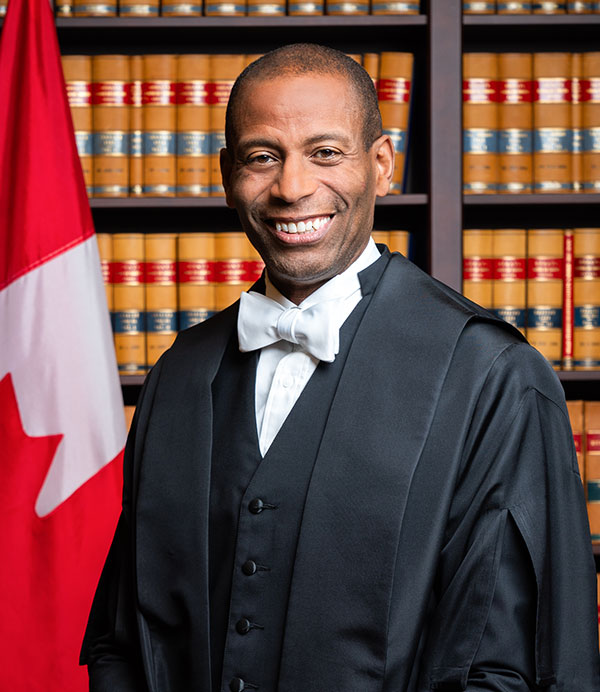
Speaker of the House of Commons
Each year, the Report to Canadians showcases the work of the House of Commons. While adapting to changing times, Members of Parliament serve their constituents and preserve parliamentary democracy with the support of the House of Commons Administration. The Administration ensures that Members of Parliament have the support they need to represent and serve Canadians. As well, the House of Commons Administration has improved procedures and communications to be more transparent.
More than ever, we want to communicate openly so that Canadians can follow and participate in the work of the House and its Members. Accessibility is a big part of this effort. For example, certain seats in the House galleries now have a live transcription system so that people who are deaf or hard of hearing can better follow proceedings in both official languages. We also made changes to allow Members to participate in House and committee proceedings in person or remotely. An electronic voting application also allows them to vote remotely when necessary. These measures were put in place during the pandemic, but they are now permanent features. They allow Members more flexibility so that they can work efficiently either from their constituencies or from Parliament Hill.
Our work wouldn’t be possible without the support of the House Administration. It is with great professionalism that it anticipates and responds to the needs of Members. I hope that you’ll find this report informative and that you’ll have the opportunity to visit the House of Commons in the coming months.
Hon. Greg Fergus, M.P.

Message from the Clerk

Clerk of the House of Commons
The mission of the House of Commons Administration is to anticipate and respond to the needs of the House and its Members in the service of parliamentary democracy. Our vision “One House, One Team” expresses our desire to provide Members and their staff with simplified, customized and quality services every day. We achieve this through a diverse and qualified workforce, whose expertise is essential for innovation and client service.
In 2023, we launched our latest strategic plan. This roadmap guides our efforts in helping Members serve Canadians. The plan is based on key values that reflect our commitment to Members, their staff, and our workforce: integrity and impartiality, service excellence, collaboration, and inclusion. We developed this plan in consultation with our employees, as their knowledge, experience, and perspectives are important to us.
Together, we’re working on three priorities: our people, our workplace and our service delivery. We’re therefore ensuring that our employees feel integrated and well supported in their professional development throughout their career at the House. We’re also fostering a flexible, information-driven, connected, and secure work environment to assist Members and their staff, as well as our employees in their work. This allows us to offer a seamless, customer-focused experience.
In this report, you’ll discover the initiatives that resulted from this strategy and that were implemented in 2023. I hope you’ll be as proud and satisfied as I am with the work that has been accomplished.
Eric Janse
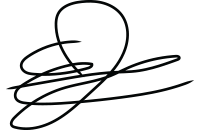
Highlights from the Hill
The House of Commons Administration’s new vision of “One House, One Team” gave employees a common goal to work toward over the past year as they supported Members of Parliament and the House of Commons.
Developing a new strategic plan
The House Administration launched its new Strategic Plan 2023–2026 in April 2023. The plan sets out the organization’s priorities and direction and will guide decision making for the next three years.
It was important to the House Administration that employees be involved in the development of the strategic plan, and the organization gave them the chance to express themselves. Together, management and employees decided on how the Administration can keep improving as it carries out its mission.
The Strategic Plan 2023–2026 gives the House Administration a new vision statement, reinforces its mission and values, and updates the organization’s priorities and focus areas.
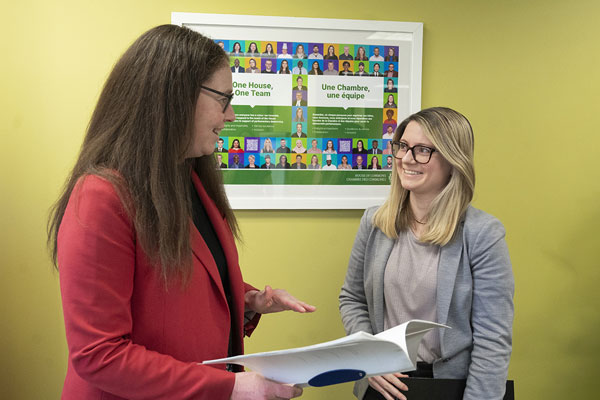
Recognizing and removing barriers
The House of Commons made progress in creating a more accessible environment since the launch of its Accessibility Plan 2023–2025. This year, the House carried out several projects in areas like training and information technology.
The House Administration organized events to raise awareness about accessibility and added tools and resources to its internal website. It also made the House of Commons’ public website more accessible. The Administration developed and offered two courses for Members, their employees, and its own employees: one on accessibility awareness and one on accessible customer service. The second course presents best practices for interacting with persons with disabilities.
The technical teams in charge of web development and maintenance received special training on accessibility. The House Administration hired experts with lived experience related to disability to examine the House of Commons’ public and internal websites and to make sure that they meet accessibility guidelines for the Web. The expert team identified issues, ranked them in order of priority, and started working on fixing them.
The House Administration also made the services offered through its contact centre more accessible to Members and their employees. For example, a single phone number now provides access to various types of services and the contact centre offers longer hours of service, in-person meetings, and a new web portal.

Building a more inclusive workplace
The House Administration remained dedicated to promoting a culture of inclusion. It encouraged employees at every level to actively participate in inclusive practices and behaviours. More than ever, the House helped its employees become effective change agents, contributing to a sense of belonging for all.
The Diversity Council, the Workplace Inclusion, Diversity and Equity team, and a growing number of employee-led groups worked together on events and on creating safe spaces for everyone to share, network, and build a diverse community. The employee-led groups include the Women’s Leadership Network, Social Abili-Tea group, the Black Employees Network, and the Indigenous Sharing Circle. The House hosted many diversity and inclusion events throughout the year, including a drag show to raise money for the Workplace Charitable Campaign. It also invited its employees to march for a second year in the Capital Pride Parade.
The House updated and expanded its self-identification questionnaire so that everyone is represented. Employees can choose to identify based on gender, sexuality, disability, Indigenous identity, race and ethnicity, language, and religion. The information provided is kept anonymous and confidential. The responses support the House Administration in making its services more inclusive.
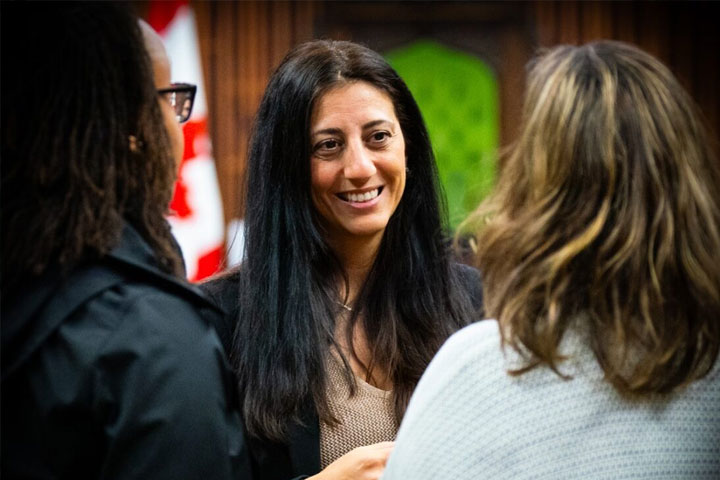
“We want the House Administration to be a place where everyone has access to the resources they need and can fully take part. Having reliable data on the demographics of our workforce helps make this possible.”—Carolyne Evangelidis, Chief Human Resources Officer
Renovating the Parliament buildings: A consultative approach
The House of Commons continued to work with Public Services and Procurement Canada and other partners on the renovation of the Parliament buildings. The Centre Block project is the biggest and most complex heritage rehabilitation effort in the country. Meetings with the project team experts and the working group, composed of Members of Parliament from all recognized parties, help to ensure that the new spaces will meet the needs of parliamentarians, employees, and visitors. The working group’s recommendations for key project decisions are approved by the Board of Internal Economy, keeping in step with the project’s progress.
Because accessibility is an essential component of the project, the House consults groups who advocate for persons with disabilities on the design and development of the building. The goal is to find a balanced approach for accessibility, one that takes into account the heritage context, parliamentary workplace and security requirements so that the Parliament buildings can serve as a model for parliamentary buildings around the world.
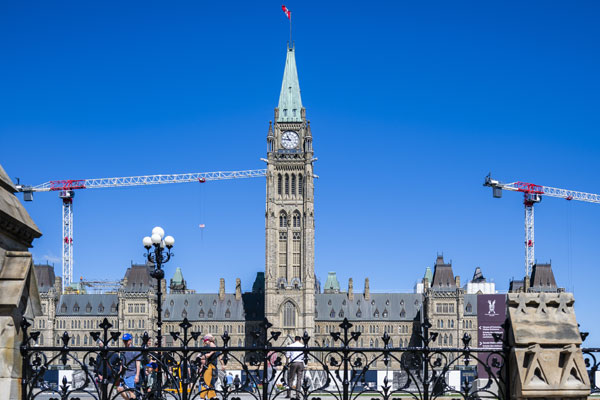
Members’ Snapshot
Constituents elect Members of Parliament to represent them in the House of Commons. Members bring their diverse backgrounds and points of view to the House, allowing for a better representation of the issues facing different groups across Canada.
Constituencies
Each of Canada’s 338 constituencies (also called ridings or electoral districts) has a representative in the House of Commons, called “Member of Parliament.” Members are the link between Parliament and Canadians. They speak to their constituents’ views in the House and support them in their constituency offices.
Every year, Members of Parliament and their staff process thousands of requests from constituents looking for help from the government. Members can help constituents connect with programs and services, including the following:
-
 Employment insurance
Employment insurance
-
 Disability pensions
Disability pensions
-
 Veteran support
Veteran support
-
 Passports and immigration
Passports and immigration
Move around the map to see the distribution of Canada’s 338 constituencies.
About Members of Parliament
Members of Parliament by the numbers
Since 1867, Members have been supporting Canadian democracy and standing for the citizens who elect them. Much like the times, the face of Parliament is constantly changing.
As of March 31, 2024
Party standings
A party must hold at least 12 seats in the House of Commons to be recognized. Recognition means that the party receives funding for research and staff. It also means that the party can more regularly take part in the proceedings of the House and its committees.
Seats held by each political party in the House of Commons (as of March 31, 2024)
Family-friendly environment
Members normally work long hours and don’t have a regular schedule. Helping Members with different personal realities to achieve good work-life balance has become even more important.
The House of Commons offers many services to help Members fulfill their responsibilities while caring for their families. The West Block building, where the interim Chamber is located, has a family room for the spouses and young children of Members. The room is equipped with family necessities like a crib, a bottle warmer, a highchair and a play mat. Members and their employees also have access to an independently run daycare located in the parliamentary precinct. This service is bilingual and is charged as personal expenses to Members and their employees.
Other family-friendly services are offered in the parliamentary precinct, such as reserved parking spaces, shuttle buses that take strollers, and child-friendly food options in cafeterias with highchairs. The House continually reviews these resources to make sure that they meet the needs of Members with infants and young children.
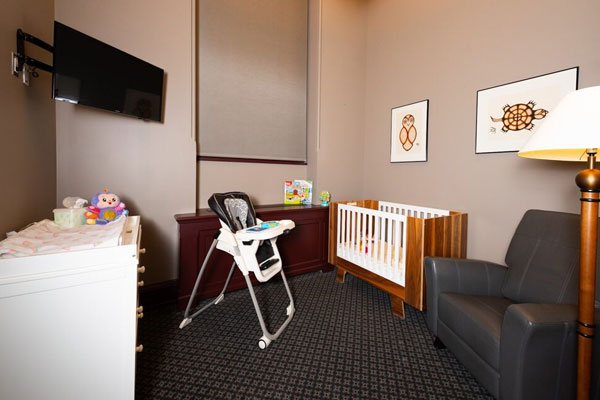
Members’ Activities
Members of the House of Commons have a wide variety of responsibilities. Here are some specifics to help you better understand the work they do.
In the Chamber
The Chamber of the House of Commons is where Members meet to debate issues of importance to Canadians. The Speaker of the House and other Presiding Officers oversee these activities.
Members’ work in the Chamber normally includes:
- Learn more about a typical week in the Chamber.
- Watch Chamber proceedings on ParlVU.
- Take a virtual tour of the interim Chamber.
Statistics about the Chamber (from April 1, 2023 to March 31, 2024)
-
Sitting days
117
-
Written questions submitted
1,101
-
Statements and rulings by the Speaker in response to points of order or questions of privilege
45
-
Sessional papers tabled
3,101
Between April 1, 2023 and March 31, 2024, the House had 1,023 sitting hours. The topics most discussed in the House included the carbon tax, cost of living, housing, foreign‑influenced activities, and Ukraine.
Electing a new Speaker of the House of Commons
On Tuesday, October 3, 2023, Members of Parliament elected the Honourable Greg Fergus as the 39th Speaker of the House of Commons.
Speaker Fergus, who was first elected as the Member of Parliament for Hull—Aylmer in 2015, is the first Black Speaker of the House of Commons. He is very committed to the Black community. He founded the Parliamentary Black Caucus and served as its co-chair for six years.
On September 27, 2023, a few days before the Honourable Greg Fergus was elected Speaker of the House, Louis Plamondon (Member for Bécancour—Nicolet—Saurel) was appointed Speaker on an interim basis. This was the first time in the history of the House of Commons that such an appointment had been made. Mr. Plamondon, Dean of the House, was given full authority to fulfill the role of Speaker, allowing the House to continue sitting while preparations for the election of a new Speaker were underway.
The main role of the Speaker is to maintain order during Chamber proceedings and to protect the rights and privileges of Members. Speakers of the House of Commons are elected by Members using a secret ballot system, where candidates are ranked in order of preference. With the House Administration’s different teams working together, the voting process took place quickly and without difficulty.
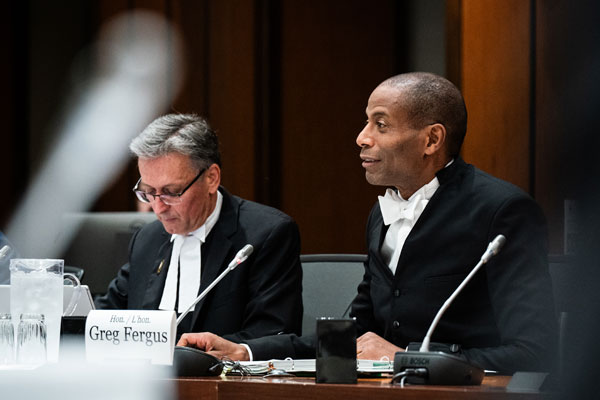
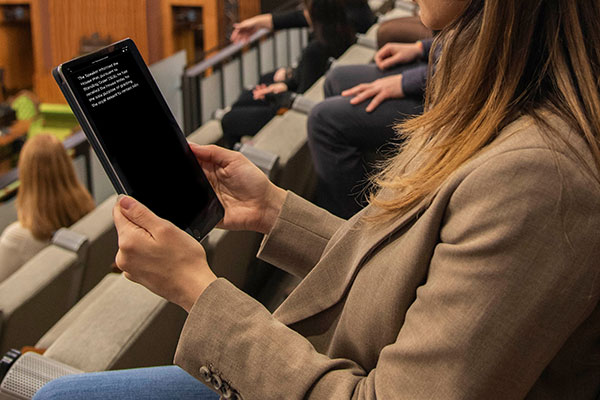
Putting technology to work during House proceedings
The House has continued to adopt new and enhanced technologies in response to changes to the House’s rules and Members’ professional realities to make it easier for them to participate in proceedings. This means that Members can still represent their constituents, take part in House and committee activities, and vote remotely, whether they are on the Hill or elsewhere in Canada.
New technology also helped make House of Commons sittings more accessible to its employees and the public. New features in the Chamber include a system in the galleries that gives visitors access to a live transcription of the proceedings in both official languages.
Changes are always carefully implemented to respect the traditional and symbolic appearance of the Chamber.
Always ready
During the summer of 2023, the House of Commons Chamber was closed for major technological upgrades. As a result, the House Administration set up an alternate Chamber in case the House of Commons was recalled.
This alternate Chamber was designed to serve as a duplicate of the Chamber in West Block and had all of the furniture and equipment needed to support the proceedings of the House. There were 338 seats for Members, a Speaker’s Chair and microphone, a Clerk’s Table with monitors, speaking podiums, a desk for the Sergeant-at-Arms, and more. A small gallery for observers and visitors was also included in the design.
The House Administration even conducted a full-scale simulation of a House session with its employees to make sure that parliamentary operations could continue if the Chamber in West Block became inaccessible. Different teams came together as “One House, One Team” to make this happen over a very short period.

In committees
In committees, Members study various issues related to their committees’ mandates, examine proposed legislation, and analyze government spending. Members often invite government officials, citizens, and experts to appear before committees to provide information. Committees then report back to the House with their conclusions and recommendations.
- Standing committees are established under the Standing Orders of the House of Commons. They are authorized to study various issues related to their mandate and the government departments assigned to them by the House.
- Standing joint committees are established under the Rules of the Senate and the Standing Orders of the House of Commons. They are composed of Members of the House of Commons and Senators.
- Special committees are appointed by the House of Commons to carry out specific inquiries, studies, or other tasks that the House deems important. They are dissolved when their final report has been presented to the House or when the House is no longer in session.
- Special joint committees are established by orders from the Senate and the House of Commons. They are composed of Members of the House of Commons and Senators. These committees are tasked with studying specific issues and are dissolved when their final report has been presented to both Houses of Parliament or when the House is no longer in session.
- See the list of committees of the House of Commons.
- Learn more about committees.
- Browse the committee meetings and watch or listen to public meetings.
Committee business by the numbers

A total of 1,206 committee meetings were held between April 1, 2023 and March 31, 2024. This total includes meetings for standing and special committees, and their respective subcommittees. During that same period, 4,724 witnesses appeared before committees either in person or by videoconference, and committees presented 182 reports to the House of Commons.
Committees reported on improving the health of Indigenous peoples in Canada, managing radioactive waste, and reducing gas emissions. Other subjects included increasing mental health support for girls, young women and crime victims. The situation at the Ukraine-Russia border was also the subject of a report, as well as the promotion of fairness in Canadian immigration decisions.
Employees of the House Administration support committees. They arrange for meetings to take place, prepare related documents, and coordinate the participation of witnesses. They also give advice on committee rules and practices, including legal advice and information on the legislative process, and draft amendments for studies of bills in committees on behalf of Members.
Outside the parliamentary precinct
Committees travel within Canada and abroad to study issues related to their mandate. In 2023, the following took place:
- The Standing Committee on Status of Women held meetings and visited sites across Canada in April. This was part of its study of the trafficking of girls, women, and gender‑diverse people.
- The Standing Committee on National Defence travelled to Estonia, Latvia, Poland, and the United Kingdom in August. This was part of its study of the threats affecting Canada and how ready the Canadian Armed Forces are to manage those threats.
- The Standing Committee on Finance travelled across the country as part of its pre-budget consultations during the fall.
Hybrid committee meetings
Committees started meeting in a hybrid format in March 2020, as a temporary measure. On June 15, 2023, the House of Commons decided to make the hybrid format permanent. This means that committee members and witnesses can continue to participate virtually in committee meetings and that only the committee chair needs to attend in person.
Did you know that committees regularly invite the public to contribute to their studies?
Invitations are announced on their websites and through their social media. For example, the Standing Committee on Health received 42 briefs from concerned citizens about its study of breast implant devices. A brief is a written document submitted to a committee. It presents an opinion, observations or recommendations. A brief is one of several ways committees receive information on the topics they study. Anyone or any organization can submit a brief, even if they don’t appear before a committee. In 2023–2024, committees received over 3,961 briefs.
In international and interparliamentary forums
Parliamentary diplomacy refers to the discussions and collaboration among legislators from around the world. The Speaker and Members of the House of Commons represent the Parliament of Canada internationally in many ways. Over the past year, they have met with counterparts and participated in talks on a wide range of national and international topics. They also defended Canada’s interests at conferences and meetings, promoted democracy, and strengthened social and economic ties with other nations.
Speaker’s diplomatic duties
In addition to his role in the House of Commons, Speaker Fergus has ceremonial and diplomatic duties. He meets with diplomats and welcomes visiting heads of government and speakers. He also leads parliamentary missions abroad to support positive relations around the world.
In 2023-2024, Speaker Fergus participated in activities with parliamentarians from South Korea, Latvia, Lithuania, Algeria, Kenya, Rwanda, and Finland to name a few. Events such as these strengthen the ties between our parliaments and countries.
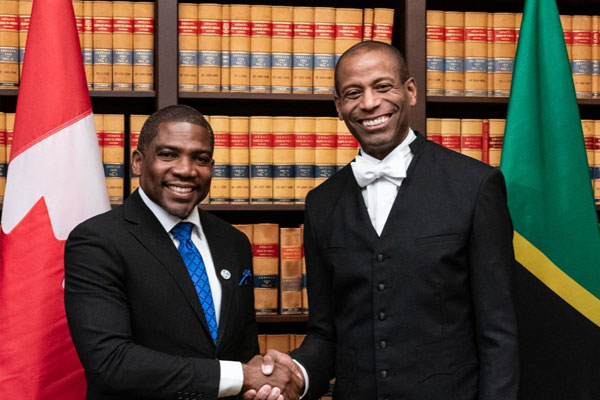
Statistics about the Speaker’s parliamentary diplomacy activities (from April 1, 2023 to March 31, 2024)
-
In-person incoming activities
63
-
In-person outgoing activities
8
-
Virtual activities
3
The Vancouver Declaration
From June 30 to July 4, Canada hosted the 30th Annual Session of the Organization for Security and Co-operation in Europe Parliamentary Assembly.
More than 365 delegates, including 225 members of 50 different parliaments, met in Vancouver, British Columbia. Topics of discussion included Russia’s war against Ukraine, environmental threats to security, and arms control. They also discussed women’s economic empowerment, energy security, human rights, and freedom of the press.
At the end of the session, the Vancouver Declaration was adopted. This declaration includes resolutions for member states on a range of security and governance issues. It highlights their support for Ukraine’s independence, freedom, and territorial integrity.
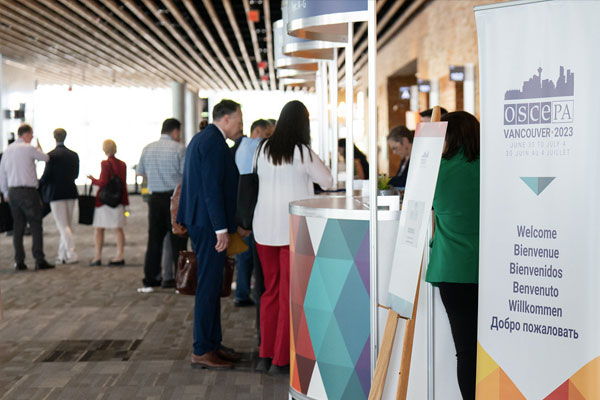
Parliamentary associations and interparliamentary groups
Parliamentarians take part in diplomatic activities by joining parliamentary associations. Associations give Senators and Members a forum to have structured discussions with their foreign counterparts. The House of Commons and the Senate jointly manage a total of 13 associations and report on their activities to both chambers.
In 2023-2024, Canadian parliamentarians participated in more than 227 events hosted by parliamentary associations and interparliamentary groups, including:
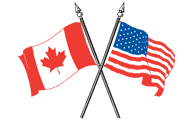
Canada-United States Inter-Parliamentary Group
On May 15 and 16, 2023, the Canadian section of the Canada-United States Inter-Parliamentary Group sent delegates to Washington, D.C. The delegates met with counterparts in the United States Senate and House of Representatives. The mission focused on security and defence, energy, and the economy. They also discussed topics like the environment, trade and agriculture, and the border.
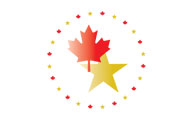
Canada-Europe Parliamentary Association
The Canada-Europe Parliamentary Association and the European Parliament Delegation for Relations with Canada held their 42nd interparliamentary meeting from June 5 to 9, 2023, in Belgium. Parties discussed topics on trade, security, foreign interference, security, and defence cooperation. After the meeting, they issued a joint declaration outlining priority areas in Canada-EU relations.

ParlAmericas parliamentary networks
On September 28 and 29, 2023, the Canadian Section of ParlAmericas (CPAM) travelled to Mexico to attend the 7th Gathering of the ParlAmericas Parliamentary Network on Climate Change and the 15th Gathering of the ParlAmericas Parliamentary Network for Gender Equality. During these gatherings, the CPAM met with delegations from 18 American and Caribbean nations. They talked about food security in the region, taking into account climate change. They also compared national approaches to addressing poverty and hunger with the help of women’s leadership.
House of Commons Administration
The House of Commons Administration offers services and advice to Members of Parliament. It supports them in their duties as lawmakers and as representatives of their constituents.
Board of Internal Economy
The Board of Internal Economy (also referred to as the Board or BOIE) governs the House of Commons. The Board consists of the Speaker, who acts as Chair, two members of the Privy Council (appointed to the Board by the Government), the Leader of the Opposition or his or her representative, and additional Members appointed in numbers so that there are an equal number of Government and opposition representatives (apart from the Speaker). The Clerk of the House of Commons acts as secretary to the BOIE.
Under the Parliament of Canada Act, the BOIE decides on financial and administrative matters for the House of Commons and its Members, physical spaces, services, and employees. All decisions are non-partisan, meaning that none favour one party over another.
Speaker of the House of Commons
The Speaker is the chair of the BOIE and head of the House Administration. He presides over proceedings of the House. The Speaker represents the House of Commons and has traditional, ceremonial, and diplomatic duties. They speak on behalf of the House of Commons when the House has business with the Crown, the Senate, and other bodies outside Parliament. For example, the Speaker leads the procession when the House is called before the Senate to attend the Speech from the Throne or when a bill is granted Royal Assent and becomes law.
Clerk of the House of Commons
In the House of Commons, the Clerk serves all Members fairly and equally, for example by providing advice on parliamentary rules and practices. They confirm all the decisions made by the House and keep a record of proceedings.
As chief executive of the House Administration, the Clerk also oversees the following functions:
Audit and Improvement
The Audit and Improvement directorate advises the organization on its governance, risk management and controls. It supports the House in continually improving processes and services to Members. Since April 1, 2024, it also takes care of the House’s strategic planning and reporting.
Corporate Communications
The Corporate Communications team serves the BOIE, the Office of the Speaker, the Clerk, the Clerk’s Management Group, and the House Administration. Its services include advice, communications support and public outreach.
Curatorial Services
Under the Curator of the House of Commons, the Curatorial Services team offers advice on heritage—things that are of historical and architectural value to Parliament. It manages a collection of over 5,000 objects, including official portraits, paintings, furniture, and other works of art. It is also responsible for the Peace Tower Carillon.
Press Gallery Secretariat
The Press Gallery Secretariat offers the technical and administrative infrastructure to Canada’s Parliamentary Press Gallery.
Procedural Services
Procedural Services gives advice to the organization on the way the House conducts its business and makes laws. It supports and trains Members on parliamentary practice. It also does research for Members and coordinates their participation in events in Canada and abroad. Procedural Services produces records of parliamentary activities in Canada’s two official languages, English and French.
Committees and Legislative Services
Committees and Legislative Services offers procedural and administrative support to all committees of the House of Commons. It also offers procedural advice to the Speaker and Members about making laws.
House Proceedings
House Proceedings supports Chamber business. It produces parliamentary publications, manages the Page Program, and coordinates private Members’ business (the bills and motions presented by Members who are not part of the Cabinet) and the management of petitions. The team also does research and offers advice and information on parliamentary procedure.
International and Interparliamentary Affairs
International and Interparliamentary Affairs (IIA) is a joint directorate of the House of Commons and the Senate that coordinates the Parliament of Canada’s external relations and activities. IIA supports the two Speakers’ exchanges with their counterparts and helps with the activities of associations and recognized groups in Canada and abroad. It also supports official visits by dignitaries and heads of State, as well as conferences hosted by Parliament.
Parliamentary Information and Publications
Parliamentary Information and Publications coordinates Procedural Services’ information technology (IT) activities. It manages Procedural Services’ information assets and produces the record of debates, proceedings, and evidence of the House and its committees. It also indexes key House and committee publications and contributes to Parliament’s strategy for sharing digital content.
Law Clerk and Parliamentary Counsel
As the House of Commons’ chief legal officer, the Law Clerk and Parliamentary Counsel provides legal and legislative services to the Speaker, the BOIE, Members, committees, the Clerk, and the House Administration.
Legal Services
Legal Services offers advice and services to the House as an institution as well as to the Speaker, the BOIE, Members, committees, and the House Administration. Legal advisors specialize in different areas, including parliamentary, constitutional, labour, and contract law. They may also be involved in legal proceedings on behalf of the House of Commons and its Members to protect their parliamentary privileges.
Legislation Services
Legislation Services supports Members in preparing private Member’s bills and motions to amend government bills. It also ensures that government bills and private Member’s bills—and the amendments approved by the House or its committees—are correctly printed at every stage as they move through the legislative process.
Administrative Services
The Office of the Deputy Clerk, Administration, now the Office of the Chief Executive Administrator, provides administrative services, technical and administrative infrastructure, and advice to Members, their staff, and the House Administration. It also oversees the service areas described below.
Digital Services and Real Property
Digital Services and Real Property offers modern and cost-effective products, workspaces, and services to the House. It provides broadcast services for parliamentary events as well as television, telecommunications, and web services. It puts in place and supports IT and information management services. It also oversees all facilities planning, including building components, connectivity and infrastructure, and implements real property projects.
Finance Services
Finance Services provides advisory and operational support in the areas of policy and financial planning, financial management, and materiel and contract management.
Human Resources Services
Human Resources Services provides integrated support in the areas of talent management, employee relations, pay and benefits, occupational health and safety, and organizational effectiveness.
Office of the Sergeant-at-Arms and Corporate Security
The Office of the Sergeant-at-Arms and Corporate Security (SAA-CS) ensures security on the floor of the House of Commons Chamber. It coordinates visitor and event access, promotes security awareness, and manages parking in the parliamentary precinct. The SAA-CS is responsible for preventing security risks and threats and responding to those it detects. It works with security partners like the Parliamentary Protective Service to ensure the security of Members and their employees.
Parliamentary Precinct Operations
Parliamentary Precinct Operations is made up of several teams that support a modern and functional work environment for Members and the House Administration. Teams offer various types of services, including trades, building support, food and catering, mail processing and distribution, transportation, and printing.
Reporting on Results
This year, the House Administration developed a new strategic plan. The Board of Internal Economy, the governing body of the House of Commons, makes sure that progress against the strategic plan is shared in the annual Report to Canadians.
A new strategic plan for the House of Commons Administration
In April 2023, the House Administration released its Strategic Plan 2023–2026. This plan sets out the organization’s priorities and strategies for three years. It helps to guide decisions and to focus resources so that the House Administration can carry out its mandate.
Vision
One House, One Team
Mission
Together—where everyone has a voice—we innovate, anticipate, and respond to the needs of the House and its Members in support of parliamentary democracy.
Values
Integrity and impartiality, Service excellence, Collaboration, and Inclusion
Strategic priorities
The Strategic Plan 2023–2026 outlines three priorities that serve as a roadmap for the House Administration:
Our people
A professional, diverse, and healthy workforce where employees feel connected and well supported in their development and their career journey.
Our workplace
(Information, Technology, Facilities, Infrastructure and Equipment)
An adaptive, informed, connected, and secure workplace that enables our current and future work.
Our service delivery
A seamless experience that is client-centric, integrated, and accessible.
Highlights of 2023–2024 results
This section presents some of the work carried out by the House Administration between April 1, 2023 and March 31, 2024. This work supports Members’ activities and aligns with our three priorities:
Our people
Improving accessibility in recruitment practices
The House Administration reviewed its Recruitment and Selection Policy and added inclusion as a guiding principle. This policy puts emphasis on the importance of creating a barrier‑free workplace to recruit more persons with disabilities. Staffing advisors received training and tools on the inclusion of persons with disabilities and on making interview processes more accessible. The House Administration released a new, more accessible hiring portal and updated its job offer templates to include requests for accommodations.
Working together toward equity
The House Administration is committed to supporting the Pay Equity Act that came into effect on August 31, 2021. The Pay Equity Committee, set up in June 2022, was given the task of analyzing roles within the House Administration, finding gender pay gaps, and developing a pay equity plan. The goal is to ensure that House employees in jobs that are commonly held by women receive equal pay for work of equal value. Earlier this year, the House Administration started the Job Renewal initiative. This initiative further supports pay equity by grouping similar roles by job description. These descriptions have been updated, standardized, and made accessible.
The Women’s Leadership Network marked its one-year anniversary on International Women’s Day. As part of 16 Days of Activism Against Gender-based Violence, the Network organized a white ribbon campaign in December to raise awareness and to commemorate victims of gender-based violence.

What is the Pay Equity Act?
The Act is meant to get equal pay for employees in jobs typically held by women by tackling gender discrimination in the pay practices and systems of federal employers. Implementing the Pay Equity Act should help to close the gender pay gap. It should also help workers receive the same pay for work of the same value. It introduces long‑lasting changes so that women’s work is valued and rewarded fairly, now and in the future. This is consistent with the House of Commons’ commitment to creating an inclusive workplace, where women receive equal pay for work of equal value.
Because February is Black History Month, a group of House Administration employees coordinated “Black Excellence at the House.” This event honoured the legacy of Black people in Canada and promoted inclusion and diversity within our workplace. Supported by the Workplace Inclusion, Diversity, and Equity team, the group organized a panel discussion between employees and the Honourable Greg Fergus, the first Black Speaker of the House of Commons. Panellists with various backgrounds shared their experiences and their insights. During the event, organizers announced the creation of the Black Employee Network for Black employees and allies of the House of Commons. The goals of the network are to make it easier to have meaningful conversations and to promote initiatives that will improve the experiences of Black employees within the House Administration.
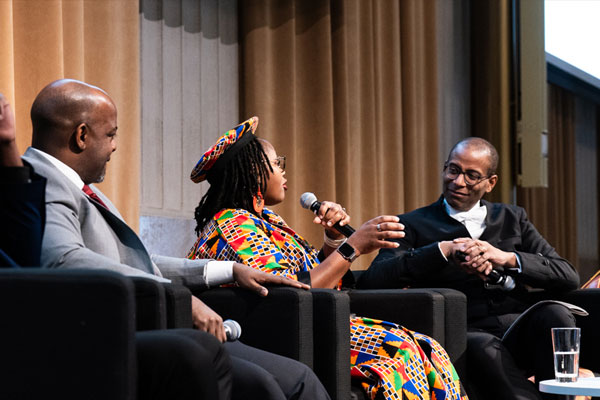
Our workplace
Building a greener future
The iconic Centre Block is being carefully restored and modernized to better serve Canada’s parliamentary democracy and to be more accessible to all Canadians. Upgrades are underway to make the Centre Block building energy-efficient. This includes a geothermal system, designed to make the building carbon-neutral.
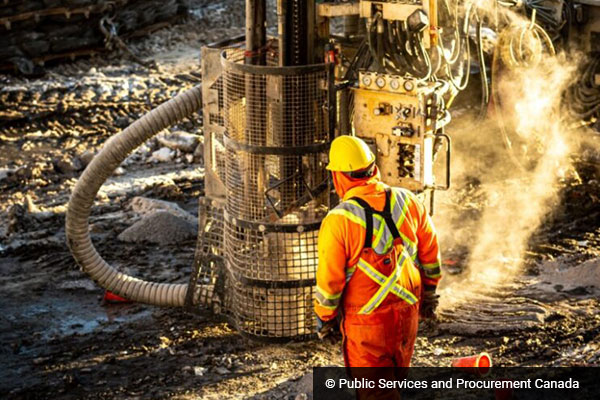
Did you know?
The geothermal system exchanges energy with the Earth by moving a mix of water and biodegradable antifreeze through pipes. In total, 92 geothermal wells will connect more than 50,000 metres of pipe to heat pumps.
The House Administration keeps looking for ways to lower the environmental impact of the services it provides. For instance, Food Services has begun donating surplus food to charitable organizations and is working to reduce the use of plastics by offering eco-friendly containers, bowls and cups, and compostable paper straws and napkins.
Restoring the Peace Tower Carillon
Parliament’s Peace Tower was built to replace the Victoria Tower destroyed during the 1916 fire on Parliament Hill. The Peace Tower Carillon was dedicated to a lasting peace following the First World War. William Lyon Mackenzie King, Prime Minister of Canada at the time, even dubbed it “the voice of the nation.” The Peace Tower Carillon was officially opened on July 1, 1927, on the 60th anniversary of Confederation. This event also marked the first-ever nationwide live radio broadcast.
The Peace Tower Carillon is made up of 53 bronze bells, weighing more than 66 tons in total. Before the restoration work started, it was the best-known and most-often played carillon of Canada’s 11 carillons. As part of the Centre Block rehabilitation project, the Peace Tower is undergoing major upgrades and much-needed cleaning and repair. World‑leading carillon restoration specialists from the Netherlands removed 22 bells and their mechanisms to restore them. The specialists are also restoring the clappers from the larger bells that are still in place. The ongoing conservation work will improve sound quality and the carillon’s playability.

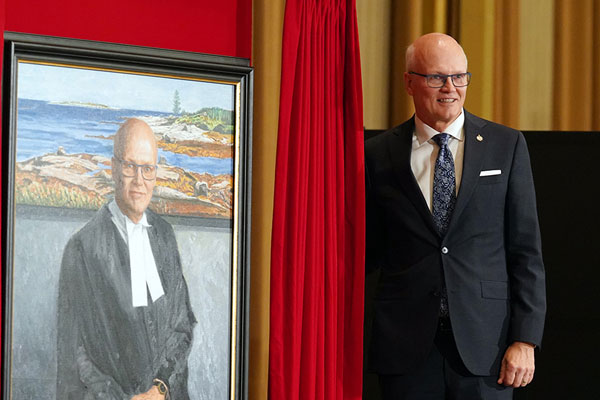
Unveiling of Speaker Regan’s Portrait
On June 6, 2023, the official portrait of the Honourable Geoff Regan, who served as the 36th Speaker of the House of Commons, was unveiled. The artist is Nova Scotian James Middleton. The tradition of commissioning the portrait of the Speaker predates Confederation. The official portrait of the Honourable Regan hangs in West Block with those of his predecessors.
Ensuring everyone’s safety thanks to emergency prevention and preparedness
When employees need to exit a building quickly during an emergency, those with limited mobility—especially those in wheelchairs or on crutches—may find it difficult to use the stairs or to move quickly.
Thanks to its Emergency Evacuation Support Program, the House Administration strengthened its evacuation plans for persons with disabilities. Employees can ask for permanent or temporary accommodations to help them evacuate a building safely. Plans can also be customized for employees with non-visible disabilities such as anxiety, post‑traumatic stress disorder, pulmonary or heart disease, and respiratory difficulties.
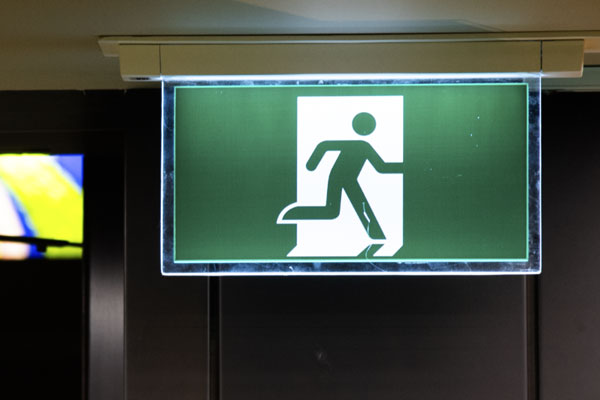
Our service delivery
Preparing for the next general election
Every 10 years, the boundaries of federal electoral districts in each province (also called constituencies or ridings) are reviewed to take into account changes in Canada’s population. This review also helps to determine how many Members of Parliament need to be assigned to each province, making sure that there is equal representation. This process is referred to as a federal redistribution. The most recent redistribution was completed this year, and five new constituencies were added to the existing 338. The boundaries of other constituencies were also changed. As a result, in anticipation of the next general election, the House of Commons Administration is putting in place additional office units to accommodate the 343 Members of Parliament.
Leveraging remote simultaneous interpretation for House committees
To support parliamentary activities, the House of Commons and the Translation Bureau ran a pilot project for remote simultaneous interpretation during committee proceedings. For this project, the House of Commons adapted its systems in its committee rooms for the Translation Bureau’s interpreters, who would be working outside the parliamentary precinct. This allowed for a seamless experience for everyone—committee members, guests, and interpreters alike.
House Administration employees also took part in simulations. This helped to make sure that everything worked well technically and that the Translation Bureau’s requirements were met. This project also helped to increase the Translation Bureau’s interpretation capacity, allowing for more hours of service. This initiative will increase the number and length of committee meetings.

Looking out for everyone’s safety in and beyond the office
The House Administration is dedicated to creating a workplace where everyone, regardless of their location or role, feels safe. To achieve this, it relies on a well-developed approach to protect Members, their employees, visitors, and House Administration employees. This year, it provided more support and information on security best practices to Members and their employees who plan or attend events outside the parliamentary precinct as part of their parliamentary duties.
It also launched a system for reporting non-urgent security incidents. This system allows the House Administration to be more proactive in security management.

Financial Information
This section presents a snapshot of 2023–2024 financial information regarding Members of Parliament and the House Administration. For more information, visit the Reports and Disclosure section on ourcommons.ca.
Budget vs. net results
| Budget1 | Net results1 | Variance ($) | Variance (%) | |
|---|---|---|---|---|
| Members and House Officers | 390,436 | 363,961 | 26,475 | 7% |
| Committees, parliamentary associations and parliamentary exchanges | 9,057 | 6,831 | 2,226 | 25% |
| Members and House Officers program | 399,493 | 370,792 | 28,701 | 7% |
| House Administration program | 273,285 | 271,622 | 1,663 | 1% |
| Total net operating expenses | 672,778 | 642,414 | 30,364 | 5% |
| Services received without charge2 | 109,386 | 109,386 | - | - |
| Total net cost of operations | 782,164 | 751,800 | 30,364 | 4% |
House Administration
| House Administration | Net results | Full-time equivalent (FTE) budget3 |
|---|---|---|
| Digital Services and Real Property | 103,773 | 463 |
| Procedural Services | 32,699 | 331 |
| Parliamentary Precinct Operations | 29,889 | 453 |
| Human Resources Services | 22,986 | 162 |
| Finance Services | 19,192 | 175 |
| Office of the Deputy Clerk, Administration (now the Office of the Chief Executive Administrator) | 8,105 | 64 |
| Office of the Sergeant-at-Arms and Corporate Security | 10,005 | 74 |
| Office of the Clerk and Secretariat | 8,203 | 66 |
| Office of the Law Clerk and Parliamentary Counsel | 4,759 | 38 |
| Employee Benefit Plans and Accrual Adjustments | 32,011 | - |
| Total net operating expenses | 271,622 | 1,825 |
1 Figures adjusted to include year-end accrual entries.
2 Services received without charge from federal government departments and agencies.
3 Budgeted number of permanent FTE employees (excluding FTE recoveries).